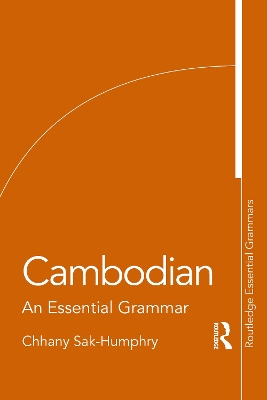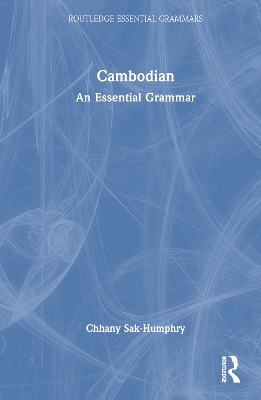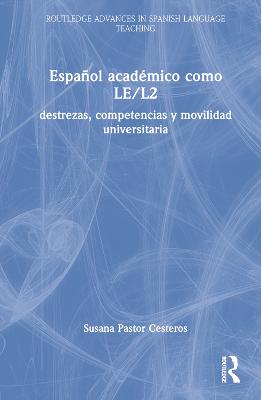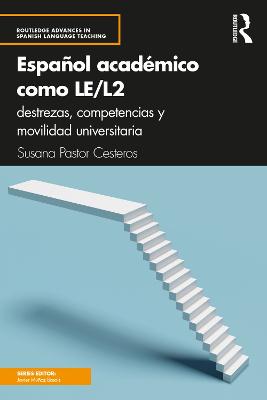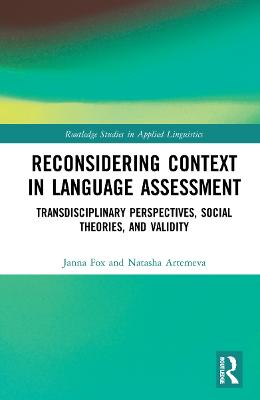Writings of Lyle F. Bachman
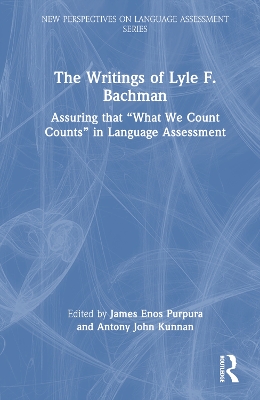 -10%
portes grátis
-10%
portes grátis
Writings of Lyle F. Bachman
Assuring that "What We Count Counts" in Language Assessment
Kunnan, Antony John; Purpura, James Enos
Taylor & Francis Ltd
07/2024
474
Dura
Inglês
9781138788640
15 a 20 dias
Descrição não disponível.
Support Material: Further Readings from Lyle F. Bachman
Series Editors' Preface
The L. F. Bachman Collection Project
by James Enos Purpura
Acknowledgments
Permissions
Introduction
Introducing L. F. Bachman's Milieu
by James Enos Purpura & Antony John Kunnan
Section 1: About L. F. Bachman
Article 1.1
Language Assessment: Its Development and Future-An interview with Lyle F. Bachman
by Jing Chen (2011)
Article 1.2
A biographical sketch of Lyle Bachman
by Antony John Kunnan (2013)
Section 2: Validation: Theory and Practice
Article 2.1
The construct validation of some components of communicative proficiency (with Adrian S. Palmer) (1982)
Article 2.2
A comparison of the abilities measured by the Cambridge and Educational Testing Service EFL test batteries (with Fred Davidson and John Foulkes) (1990)
Article 2.3
Constructing an assessment use argument and supporting claims about test taker-assessment interactions in evidence-centered assessment design (2003)
Article 2.4
Building and supporting a case for test use (2005)
Article 2.5
How is educational measurement supposed to deal with test use? (2013)
Article 2.6
A new approach to classroom-based language assessment (with Barbara E. Damboeck) (2022)
Article 2.7 (Online)
Bachman, L. F. (1982). The trait structure of cloze test scores. TESOL Quarterly, 16, 61-70.
Article 2.8 (Online)
Anderson, N., Bachman, L. F., Perkins, K., & Cohen, A. (1991). An exploratory study into the construct validity of a reading comprehension test Triangulation of data sources. Language Testing, 8, 41-66.
Article 2.9 (Online)
Bachman, L. F. (2016, unpublished). Assessment justification: An alternative to validation for evaluating and assuring assessment quality
Section 3: Defining What Language Tests Measure: L2 Proficiency and Performance
Article 3.1
An examination of some language tests from a communicative viewpoint (1985)
Article 3.2
Some reflections on task-based language performance assessment (2002)
Article 3.3
Alternative interpretations of alternative assessments: Some validity issues in educational performance assessments (2002)
Article 3.4
What is the construct? The dialectic of abilities and contexts in defining constructs in language assessment (2007)
Article 3.5 (Online)
Bachman, L. F., & Sauvignon, S. J. (1986). The evaluation of communicative language proficiency: A critique of the ACTFL oral interview. The Modern Language Journal, 70, 380-390.
Article 3.6 (Online)
Bachman, L. F. (1988). Problems in examining the validity of the ACTFL oral proficiency interview. Studies in Second Language Acquisition, 10, 149-164.
Article 3.7 (Online)
Bachman, L. F. (1990). Constructing measures and measuring constructs. In B. Harley, P. Allen, J. Cummins, & M. Swain (Eds.), The Development of Second Language Proficiency (pp. 26-38). Cambridge: Cambridge University Press.
Section 4: Test Task Characteristics
Article 4.1
Performance on cloze tests with fixed-ratio and rational deletions (1985)
Article 4.2
The use of test method characteristics in the content analysis and design of EFL proficiency tests (with Fred Davidson and Michael Milanovic) (1996)
Article 4.3 (Online)
Bachman, L., F., Lynch, B., & Mason, M. (1995). Investigating variability in tasks and rater judgments in a performance test of foreign language speaking. Language Testing, 12, 238-257.
Article 4.4 (Online)
Bachman, L. F., & Palmer, A. S. (1981). The construct validation of the FSI oral interview. Language Learning, 31, 67-86.
Article 4.5 (Online)
Bachman, L. F. (1981). An experiment in a picture-stimuli procedure for testing oral production. In A. S. Palmer et al. (Eds.), The construct validation of tests of communicative competence (pp. 140-148). Washington, D. C. TESOL.
Article 4.6 (Online)
Bachman, L. F., Kunnan, A. Vanniarajan, S., & Lynch, B. (1988). Task and ability analysis as a basis of examining the content and construct comparability of two EFL proficiency test batteries. Language Testing, 5, 128-159.
Section 5: Language Testing-Second Language Acquisition
Article 5.1
Language Testing-SLA research interfaces (1988)
Article 5.2 (Online)
Bachman, L. F. (1988). Language Testing-SLA interfaces: An update. In L. F. Bachman & A. Cohen (Eds.), Interfaces between SLA and Language Testing Research (pp. 1-31). New York: Cambridge University Press.
Section 6: Epistemological Issues in Applied Linguistics Research
Article 6.1
Generalizability: A journey into the nature of empirical research in applied linguistics (2006)
Article 6.2 (Online)
Bachman, L. F. (2009). Generalizability and Research Use Arguments. In Erickan, K. & Roth, W-M. (Eds.) Generalizing from Educational Research: Beyond qualitative and quantitative polarization. (pp. 127-148) New York: Routledge.
Section 7: State of the Art and Reflections
Article 7.1
What does language testing have to offer? (1991)
Article 7.2
Modern language testing at the turn of the century: Assuring that what we count counts (2000)
Article 7.3
Ongoing challenges [in Language Assessment] (2014)
Article 7.4 (Online)
Bachman, L. F., & Purpura, J. E. (2008). Language Assessments: Gate-Keepers or Door Openers? In B. M. Spolsky, & F. M. Hult, (Eds.), The Handbook of Educational Linguistics (pp. 456-468) Boston: Wiley-Blackwell.
List of Bachman's Publications
Author and Subject Index
Series Editors' Preface
The L. F. Bachman Collection Project
by James Enos Purpura
Acknowledgments
Permissions
Introduction
Introducing L. F. Bachman's Milieu
by James Enos Purpura & Antony John Kunnan
Section 1: About L. F. Bachman
Article 1.1
Language Assessment: Its Development and Future-An interview with Lyle F. Bachman
by Jing Chen (2011)
Article 1.2
A biographical sketch of Lyle Bachman
by Antony John Kunnan (2013)
Section 2: Validation: Theory and Practice
Article 2.1
The construct validation of some components of communicative proficiency (with Adrian S. Palmer) (1982)
Article 2.2
A comparison of the abilities measured by the Cambridge and Educational Testing Service EFL test batteries (with Fred Davidson and John Foulkes) (1990)
Article 2.3
Constructing an assessment use argument and supporting claims about test taker-assessment interactions in evidence-centered assessment design (2003)
Article 2.4
Building and supporting a case for test use (2005)
Article 2.5
How is educational measurement supposed to deal with test use? (2013)
Article 2.6
A new approach to classroom-based language assessment (with Barbara E. Damboeck) (2022)
Article 2.7 (Online)
Bachman, L. F. (1982). The trait structure of cloze test scores. TESOL Quarterly, 16, 61-70.
Article 2.8 (Online)
Anderson, N., Bachman, L. F., Perkins, K., & Cohen, A. (1991). An exploratory study into the construct validity of a reading comprehension test Triangulation of data sources. Language Testing, 8, 41-66.
Article 2.9 (Online)
Bachman, L. F. (2016, unpublished). Assessment justification: An alternative to validation for evaluating and assuring assessment quality
Section 3: Defining What Language Tests Measure: L2 Proficiency and Performance
Article 3.1
An examination of some language tests from a communicative viewpoint (1985)
Article 3.2
Some reflections on task-based language performance assessment (2002)
Article 3.3
Alternative interpretations of alternative assessments: Some validity issues in educational performance assessments (2002)
Article 3.4
What is the construct? The dialectic of abilities and contexts in defining constructs in language assessment (2007)
Article 3.5 (Online)
Bachman, L. F., & Sauvignon, S. J. (1986). The evaluation of communicative language proficiency: A critique of the ACTFL oral interview. The Modern Language Journal, 70, 380-390.
Article 3.6 (Online)
Bachman, L. F. (1988). Problems in examining the validity of the ACTFL oral proficiency interview. Studies in Second Language Acquisition, 10, 149-164.
Article 3.7 (Online)
Bachman, L. F. (1990). Constructing measures and measuring constructs. In B. Harley, P. Allen, J. Cummins, & M. Swain (Eds.), The Development of Second Language Proficiency (pp. 26-38). Cambridge: Cambridge University Press.
Section 4: Test Task Characteristics
Article 4.1
Performance on cloze tests with fixed-ratio and rational deletions (1985)
Article 4.2
The use of test method characteristics in the content analysis and design of EFL proficiency tests (with Fred Davidson and Michael Milanovic) (1996)
Article 4.3 (Online)
Bachman, L., F., Lynch, B., & Mason, M. (1995). Investigating variability in tasks and rater judgments in a performance test of foreign language speaking. Language Testing, 12, 238-257.
Article 4.4 (Online)
Bachman, L. F., & Palmer, A. S. (1981). The construct validation of the FSI oral interview. Language Learning, 31, 67-86.
Article 4.5 (Online)
Bachman, L. F. (1981). An experiment in a picture-stimuli procedure for testing oral production. In A. S. Palmer et al. (Eds.), The construct validation of tests of communicative competence (pp. 140-148). Washington, D. C. TESOL.
Article 4.6 (Online)
Bachman, L. F., Kunnan, A. Vanniarajan, S., & Lynch, B. (1988). Task and ability analysis as a basis of examining the content and construct comparability of two EFL proficiency test batteries. Language Testing, 5, 128-159.
Section 5: Language Testing-Second Language Acquisition
Article 5.1
Language Testing-SLA research interfaces (1988)
Article 5.2 (Online)
Bachman, L. F. (1988). Language Testing-SLA interfaces: An update. In L. F. Bachman & A. Cohen (Eds.), Interfaces between SLA and Language Testing Research (pp. 1-31). New York: Cambridge University Press.
Section 6: Epistemological Issues in Applied Linguistics Research
Article 6.1
Generalizability: A journey into the nature of empirical research in applied linguistics (2006)
Article 6.2 (Online)
Bachman, L. F. (2009). Generalizability and Research Use Arguments. In Erickan, K. & Roth, W-M. (Eds.) Generalizing from Educational Research: Beyond qualitative and quantitative polarization. (pp. 127-148) New York: Routledge.
Section 7: State of the Art and Reflections
Article 7.1
What does language testing have to offer? (1991)
Article 7.2
Modern language testing at the turn of the century: Assuring that what we count counts (2000)
Article 7.3
Ongoing challenges [in Language Assessment] (2014)
Article 7.4 (Online)
Bachman, L. F., & Purpura, J. E. (2008). Language Assessments: Gate-Keepers or Door Openers? In B. M. Spolsky, & F. M. Hult, (Eds.), The Handbook of Educational Linguistics (pp. 456-468) Boston: Wiley-Blackwell.
List of Bachman's Publications
Author and Subject Index
Este título pertence ao(s) assunto(s) indicados(s). Para ver outros títulos clique no assunto desejado.
The Writings of Lyle F. Bachman;Assuring that "What We Count Counts" in Language Assessment;James Enos Purpura;Antony John Kunnan;Lyle F. Bachman;New Perspectives on Language Assessment;language assessment;applied linguistics;validity and validation;test task characteristics;language testing;second language acquisition;epistemological issues in applied linguistics
Support Material: Further Readings from Lyle F. Bachman
Series Editors' Preface
The L. F. Bachman Collection Project
by James Enos Purpura
Acknowledgments
Permissions
Introduction
Introducing L. F. Bachman's Milieu
by James Enos Purpura & Antony John Kunnan
Section 1: About L. F. Bachman
Article 1.1
Language Assessment: Its Development and Future-An interview with Lyle F. Bachman
by Jing Chen (2011)
Article 1.2
A biographical sketch of Lyle Bachman
by Antony John Kunnan (2013)
Section 2: Validation: Theory and Practice
Article 2.1
The construct validation of some components of communicative proficiency (with Adrian S. Palmer) (1982)
Article 2.2
A comparison of the abilities measured by the Cambridge and Educational Testing Service EFL test batteries (with Fred Davidson and John Foulkes) (1990)
Article 2.3
Constructing an assessment use argument and supporting claims about test taker-assessment interactions in evidence-centered assessment design (2003)
Article 2.4
Building and supporting a case for test use (2005)
Article 2.5
How is educational measurement supposed to deal with test use? (2013)
Article 2.6
A new approach to classroom-based language assessment (with Barbara E. Damboeck) (2022)
Article 2.7 (Online)
Bachman, L. F. (1982). The trait structure of cloze test scores. TESOL Quarterly, 16, 61-70.
Article 2.8 (Online)
Anderson, N., Bachman, L. F., Perkins, K., & Cohen, A. (1991). An exploratory study into the construct validity of a reading comprehension test Triangulation of data sources. Language Testing, 8, 41-66.
Article 2.9 (Online)
Bachman, L. F. (2016, unpublished). Assessment justification: An alternative to validation for evaluating and assuring assessment quality
Section 3: Defining What Language Tests Measure: L2 Proficiency and Performance
Article 3.1
An examination of some language tests from a communicative viewpoint (1985)
Article 3.2
Some reflections on task-based language performance assessment (2002)
Article 3.3
Alternative interpretations of alternative assessments: Some validity issues in educational performance assessments (2002)
Article 3.4
What is the construct? The dialectic of abilities and contexts in defining constructs in language assessment (2007)
Article 3.5 (Online)
Bachman, L. F., & Sauvignon, S. J. (1986). The evaluation of communicative language proficiency: A critique of the ACTFL oral interview. The Modern Language Journal, 70, 380-390.
Article 3.6 (Online)
Bachman, L. F. (1988). Problems in examining the validity of the ACTFL oral proficiency interview. Studies in Second Language Acquisition, 10, 149-164.
Article 3.7 (Online)
Bachman, L. F. (1990). Constructing measures and measuring constructs. In B. Harley, P. Allen, J. Cummins, & M. Swain (Eds.), The Development of Second Language Proficiency (pp. 26-38). Cambridge: Cambridge University Press.
Section 4: Test Task Characteristics
Article 4.1
Performance on cloze tests with fixed-ratio and rational deletions (1985)
Article 4.2
The use of test method characteristics in the content analysis and design of EFL proficiency tests (with Fred Davidson and Michael Milanovic) (1996)
Article 4.3 (Online)
Bachman, L., F., Lynch, B., & Mason, M. (1995). Investigating variability in tasks and rater judgments in a performance test of foreign language speaking. Language Testing, 12, 238-257.
Article 4.4 (Online)
Bachman, L. F., & Palmer, A. S. (1981). The construct validation of the FSI oral interview. Language Learning, 31, 67-86.
Article 4.5 (Online)
Bachman, L. F. (1981). An experiment in a picture-stimuli procedure for testing oral production. In A. S. Palmer et al. (Eds.), The construct validation of tests of communicative competence (pp. 140-148). Washington, D. C. TESOL.
Article 4.6 (Online)
Bachman, L. F., Kunnan, A. Vanniarajan, S., & Lynch, B. (1988). Task and ability analysis as a basis of examining the content and construct comparability of two EFL proficiency test batteries. Language Testing, 5, 128-159.
Section 5: Language Testing-Second Language Acquisition
Article 5.1
Language Testing-SLA research interfaces (1988)
Article 5.2 (Online)
Bachman, L. F. (1988). Language Testing-SLA interfaces: An update. In L. F. Bachman & A. Cohen (Eds.), Interfaces between SLA and Language Testing Research (pp. 1-31). New York: Cambridge University Press.
Section 6: Epistemological Issues in Applied Linguistics Research
Article 6.1
Generalizability: A journey into the nature of empirical research in applied linguistics (2006)
Article 6.2 (Online)
Bachman, L. F. (2009). Generalizability and Research Use Arguments. In Erickan, K. & Roth, W-M. (Eds.) Generalizing from Educational Research: Beyond qualitative and quantitative polarization. (pp. 127-148) New York: Routledge.
Section 7: State of the Art and Reflections
Article 7.1
What does language testing have to offer? (1991)
Article 7.2
Modern language testing at the turn of the century: Assuring that what we count counts (2000)
Article 7.3
Ongoing challenges [in Language Assessment] (2014)
Article 7.4 (Online)
Bachman, L. F., & Purpura, J. E. (2008). Language Assessments: Gate-Keepers or Door Openers? In B. M. Spolsky, & F. M. Hult, (Eds.), The Handbook of Educational Linguistics (pp. 456-468) Boston: Wiley-Blackwell.
List of Bachman's Publications
Author and Subject Index
Series Editors' Preface
The L. F. Bachman Collection Project
by James Enos Purpura
Acknowledgments
Permissions
Introduction
Introducing L. F. Bachman's Milieu
by James Enos Purpura & Antony John Kunnan
Section 1: About L. F. Bachman
Article 1.1
Language Assessment: Its Development and Future-An interview with Lyle F. Bachman
by Jing Chen (2011)
Article 1.2
A biographical sketch of Lyle Bachman
by Antony John Kunnan (2013)
Section 2: Validation: Theory and Practice
Article 2.1
The construct validation of some components of communicative proficiency (with Adrian S. Palmer) (1982)
Article 2.2
A comparison of the abilities measured by the Cambridge and Educational Testing Service EFL test batteries (with Fred Davidson and John Foulkes) (1990)
Article 2.3
Constructing an assessment use argument and supporting claims about test taker-assessment interactions in evidence-centered assessment design (2003)
Article 2.4
Building and supporting a case for test use (2005)
Article 2.5
How is educational measurement supposed to deal with test use? (2013)
Article 2.6
A new approach to classroom-based language assessment (with Barbara E. Damboeck) (2022)
Article 2.7 (Online)
Bachman, L. F. (1982). The trait structure of cloze test scores. TESOL Quarterly, 16, 61-70.
Article 2.8 (Online)
Anderson, N., Bachman, L. F., Perkins, K., & Cohen, A. (1991). An exploratory study into the construct validity of a reading comprehension test Triangulation of data sources. Language Testing, 8, 41-66.
Article 2.9 (Online)
Bachman, L. F. (2016, unpublished). Assessment justification: An alternative to validation for evaluating and assuring assessment quality
Section 3: Defining What Language Tests Measure: L2 Proficiency and Performance
Article 3.1
An examination of some language tests from a communicative viewpoint (1985)
Article 3.2
Some reflections on task-based language performance assessment (2002)
Article 3.3
Alternative interpretations of alternative assessments: Some validity issues in educational performance assessments (2002)
Article 3.4
What is the construct? The dialectic of abilities and contexts in defining constructs in language assessment (2007)
Article 3.5 (Online)
Bachman, L. F., & Sauvignon, S. J. (1986). The evaluation of communicative language proficiency: A critique of the ACTFL oral interview. The Modern Language Journal, 70, 380-390.
Article 3.6 (Online)
Bachman, L. F. (1988). Problems in examining the validity of the ACTFL oral proficiency interview. Studies in Second Language Acquisition, 10, 149-164.
Article 3.7 (Online)
Bachman, L. F. (1990). Constructing measures and measuring constructs. In B. Harley, P. Allen, J. Cummins, & M. Swain (Eds.), The Development of Second Language Proficiency (pp. 26-38). Cambridge: Cambridge University Press.
Section 4: Test Task Characteristics
Article 4.1
Performance on cloze tests with fixed-ratio and rational deletions (1985)
Article 4.2
The use of test method characteristics in the content analysis and design of EFL proficiency tests (with Fred Davidson and Michael Milanovic) (1996)
Article 4.3 (Online)
Bachman, L., F., Lynch, B., & Mason, M. (1995). Investigating variability in tasks and rater judgments in a performance test of foreign language speaking. Language Testing, 12, 238-257.
Article 4.4 (Online)
Bachman, L. F., & Palmer, A. S. (1981). The construct validation of the FSI oral interview. Language Learning, 31, 67-86.
Article 4.5 (Online)
Bachman, L. F. (1981). An experiment in a picture-stimuli procedure for testing oral production. In A. S. Palmer et al. (Eds.), The construct validation of tests of communicative competence (pp. 140-148). Washington, D. C. TESOL.
Article 4.6 (Online)
Bachman, L. F., Kunnan, A. Vanniarajan, S., & Lynch, B. (1988). Task and ability analysis as a basis of examining the content and construct comparability of two EFL proficiency test batteries. Language Testing, 5, 128-159.
Section 5: Language Testing-Second Language Acquisition
Article 5.1
Language Testing-SLA research interfaces (1988)
Article 5.2 (Online)
Bachman, L. F. (1988). Language Testing-SLA interfaces: An update. In L. F. Bachman & A. Cohen (Eds.), Interfaces between SLA and Language Testing Research (pp. 1-31). New York: Cambridge University Press.
Section 6: Epistemological Issues in Applied Linguistics Research
Article 6.1
Generalizability: A journey into the nature of empirical research in applied linguistics (2006)
Article 6.2 (Online)
Bachman, L. F. (2009). Generalizability and Research Use Arguments. In Erickan, K. & Roth, W-M. (Eds.) Generalizing from Educational Research: Beyond qualitative and quantitative polarization. (pp. 127-148) New York: Routledge.
Section 7: State of the Art and Reflections
Article 7.1
What does language testing have to offer? (1991)
Article 7.2
Modern language testing at the turn of the century: Assuring that what we count counts (2000)
Article 7.3
Ongoing challenges [in Language Assessment] (2014)
Article 7.4 (Online)
Bachman, L. F., & Purpura, J. E. (2008). Language Assessments: Gate-Keepers or Door Openers? In B. M. Spolsky, & F. M. Hult, (Eds.), The Handbook of Educational Linguistics (pp. 456-468) Boston: Wiley-Blackwell.
List of Bachman's Publications
Author and Subject Index
Este título pertence ao(s) assunto(s) indicados(s). Para ver outros títulos clique no assunto desejado.
The Writings of Lyle F. Bachman;Assuring that "What We Count Counts" in Language Assessment;James Enos Purpura;Antony John Kunnan;Lyle F. Bachman;New Perspectives on Language Assessment;language assessment;applied linguistics;validity and validation;test task characteristics;language testing;second language acquisition;epistemological issues in applied linguistics

